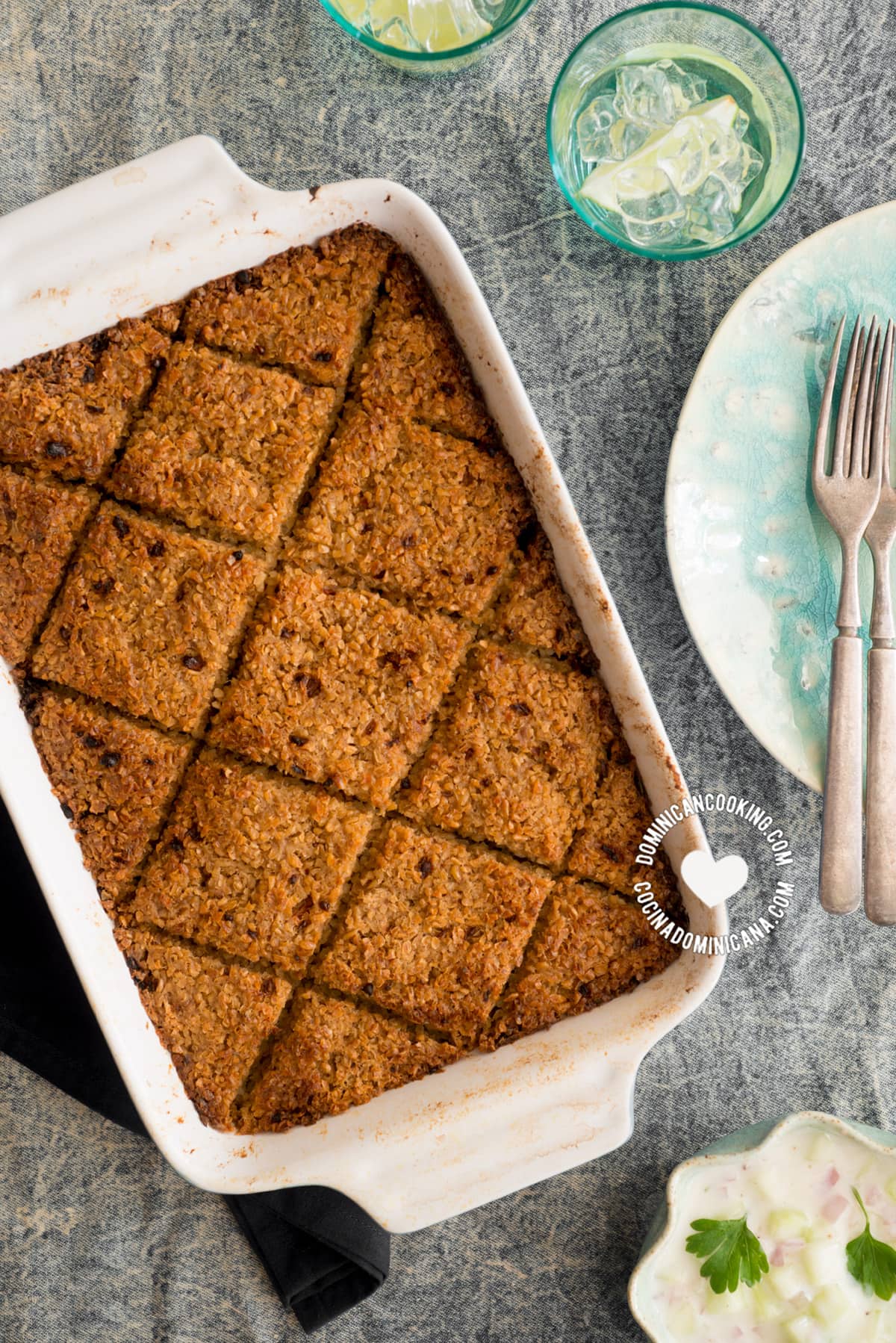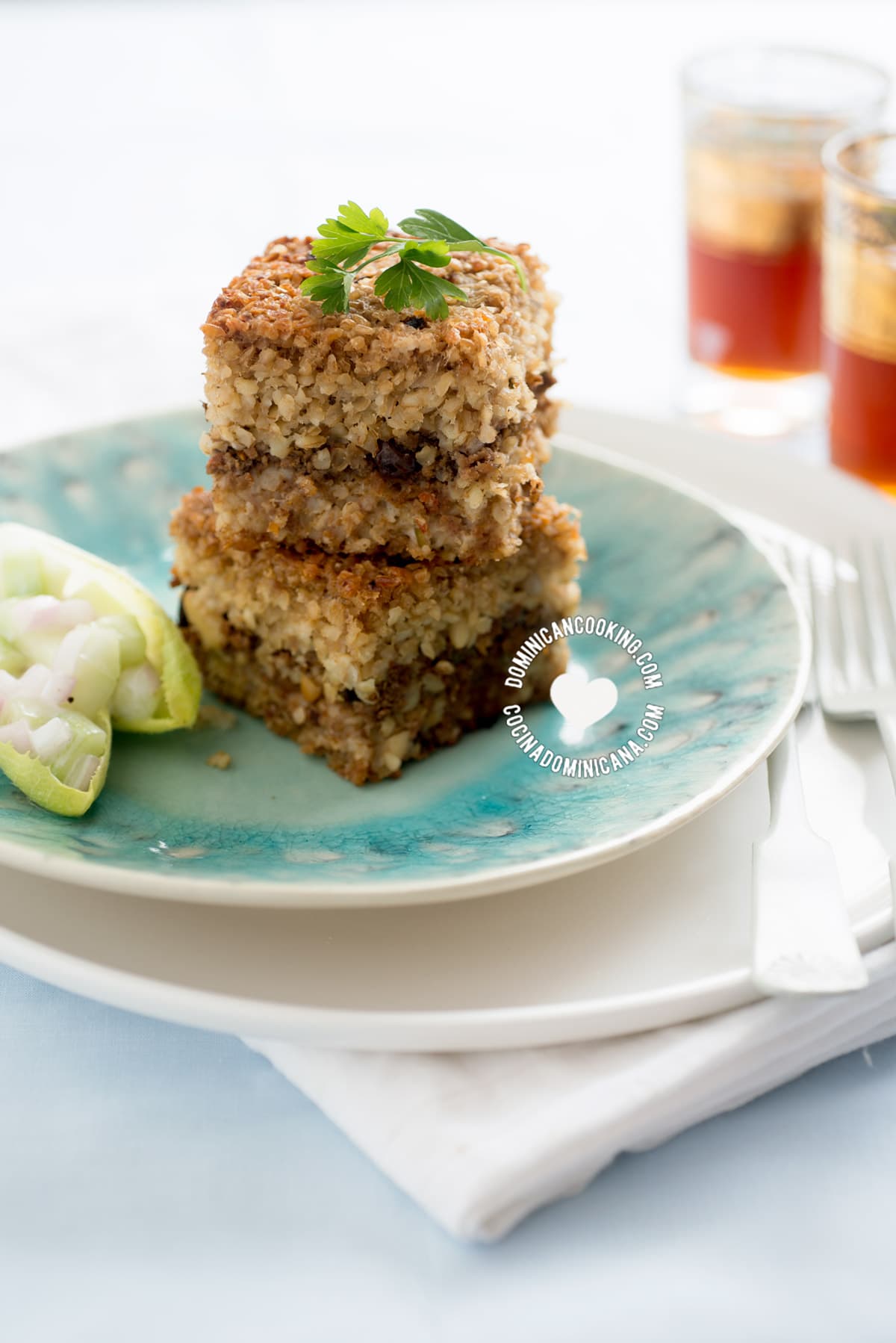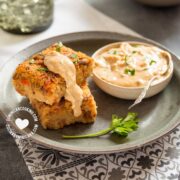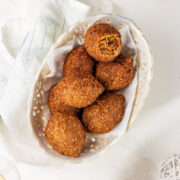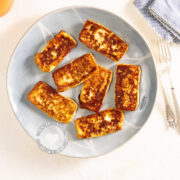Baked Kibbeh (Kipe) is lighter than traditional fried ones, I find it more flavorful and moist, and easier to make for beginners.
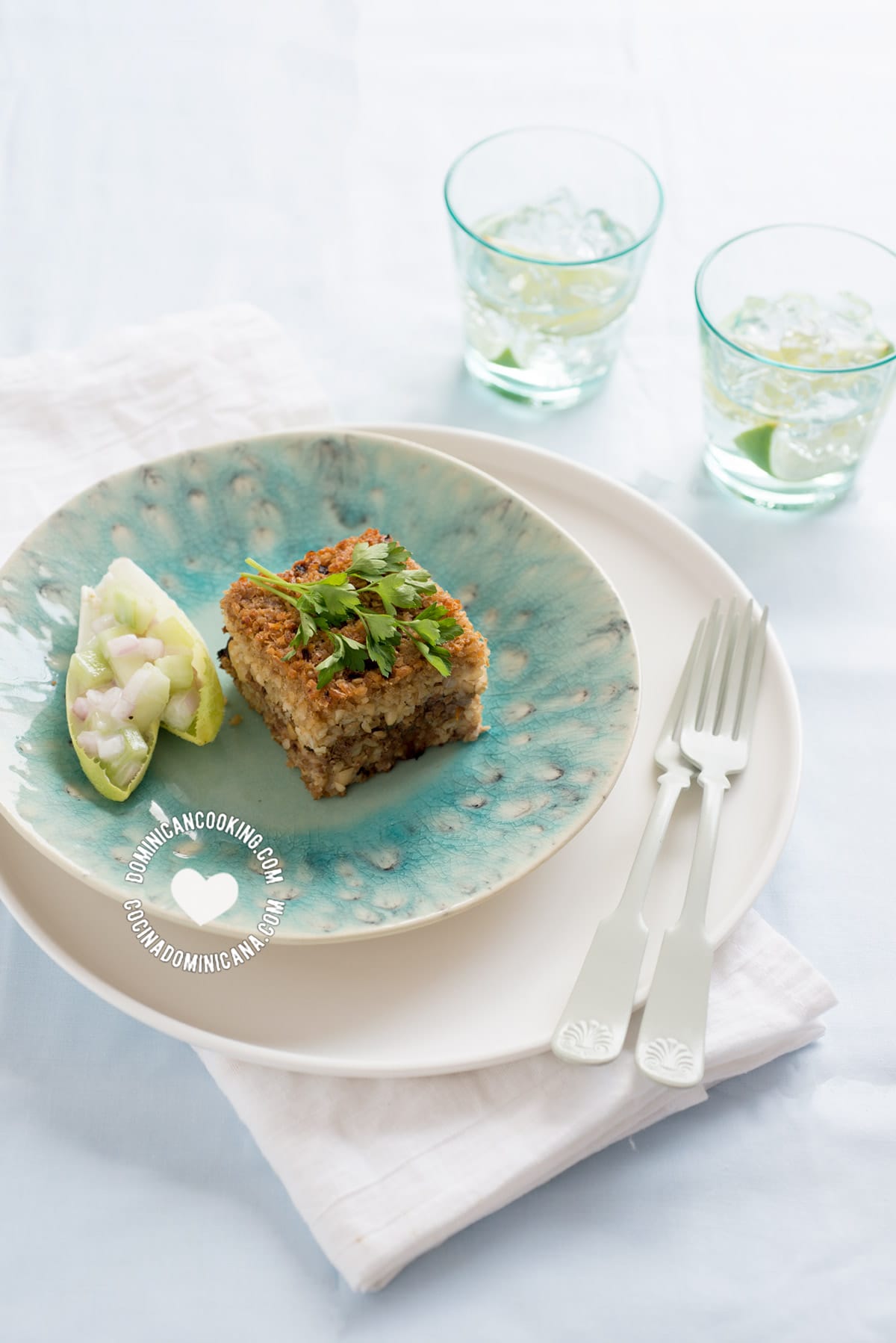
Why we ❤️ it
Nearly two centuries ago a wave of immigrants from the former Ottoman Empire found its way to America (the continent), fleeing persecution and economic hardship. With them they brought bits and pieces of the rich cuisines from a territory that surrounded most of the Mediterranean, and the Red and Black seas.
The history
Kipe / quipe (the Dominicanized version of the Middle-Eastern kibbeh), is one of those culinary treasures. You can find kibbeh from Northern Africa to the Middle East, and everywhere their inhabitants have emigrated to, which includes most of Latin America. The most common version in our country is the fried, bullet-shaped one; but the fact that I have been asked many times to include this one in our recipe collection tells you that the love for the baked kibbeh has not been lost.
Let me start by quoting the wonderful cookbook Jerusalem by Yotam Ottolenghi and Sami Tamimi (Amazon affiliate link).
Kibbeh, kubbeh, or kokeba all mean "the shape of a ball" in Arabic. Indeed, this is how they started. [...] For generations of Jewish and Arab Women being able to make nice kubbeh was considered one of the basic requirements of a "good" domesticated woman; a test of their refinement and elegance. A less arduous version--why hasn't anyone told the poor women--is kibbeh b'siniyah, where the casing and the filling are layered in a dish to form a pie.
About our recipe
But how does a Dominican with no discernible Middle Eastern heritage write the "right" recipe amongst thousands of versions of a dish of disputed provenance? The same way I do with every other recipe here: I make them the way I like them, and cross my fingers you'll like them too.
To be honest, I didn't find making this dish that much easier than the traditional fried kibbeh, perhaps because I have made the other one many times, and can make them in the right shape with my eyes closed (exaggeration warning here!). But if you think this kibbeh is any less flavorful or has anything to envy the other one, you'll be surprised. This one has an even more complex mixture of flavors and textures. And I would take it any day over the fried ones.
Notice also that Middle-Eastern kibbeh is made from lamb, a meat that is noticeably absent from Dominican cuisine. I have found that, as a general rule, Dominicans dislike lamb and prefer its cousin chivo (goat). The Dominican kibbeh is made with beef.
Many a recipe for baked kibbeh called for a food processor. I am a fan of food processors, but I wanted something more "affordable" for the beginner cook, and I also love the texture of the "whole" bulgur. This worked just perfectly for me.

Recipe
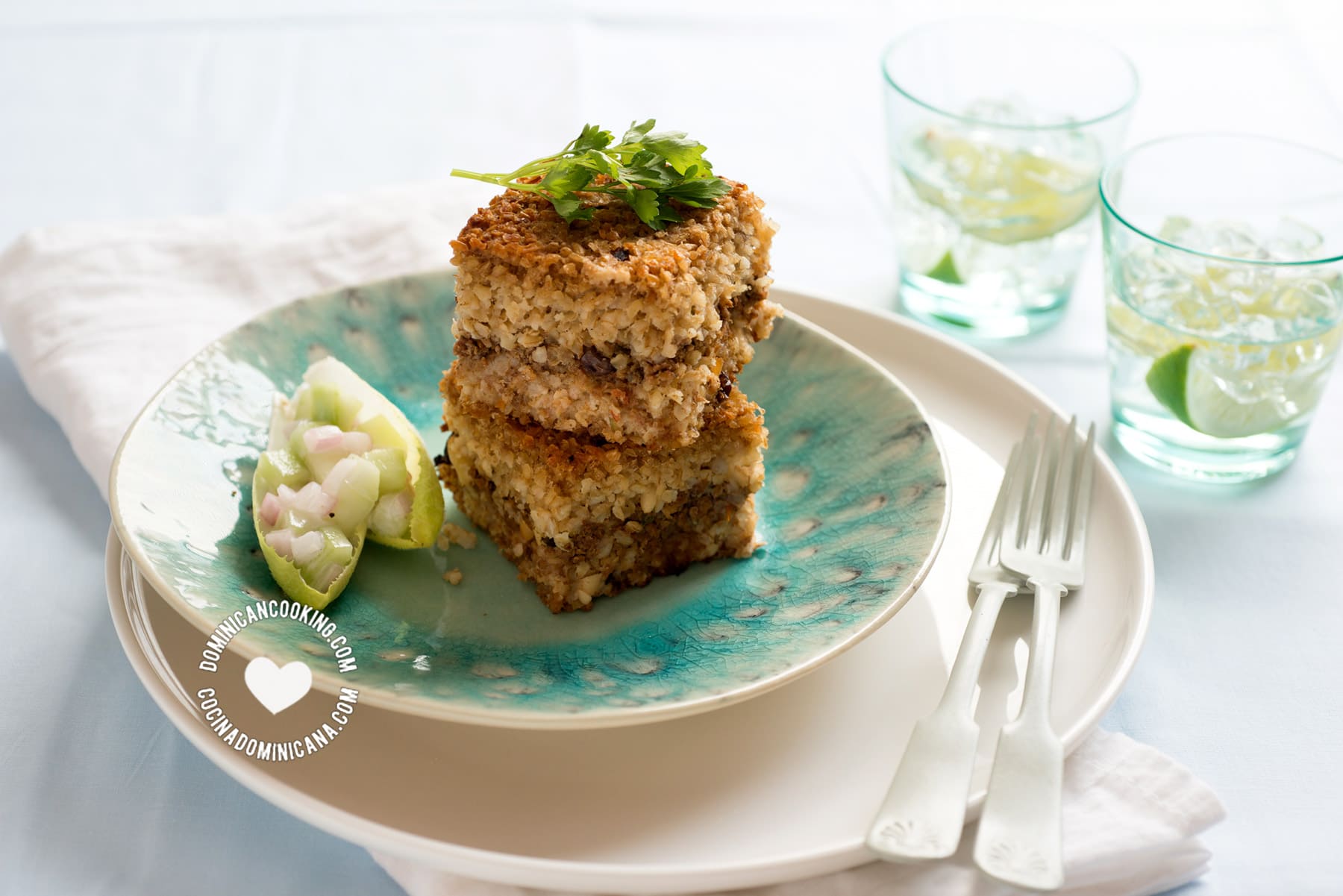
[Recipe + Video] Baked Kibbeh (Kipe)
Ingredients
- 2 cups bulgur, (see notes)
- 1 pound minced beef, [0.45 kg]
- 1 large red onion, minced finely
- 3 teaspoons salt, divided
- ⅛ teaspoon cayenne pepper
- ⅛ teaspoon cumin seeds
- ¼ teaspoon cinnamon powder
- 2 large tomato, , skinned, seeded and diced
- 6 tablespoon olive oil
- ⅓ cup raisins
- ⅓ cup pine nuts
- 4 tablespoon minced parsley
Instructions
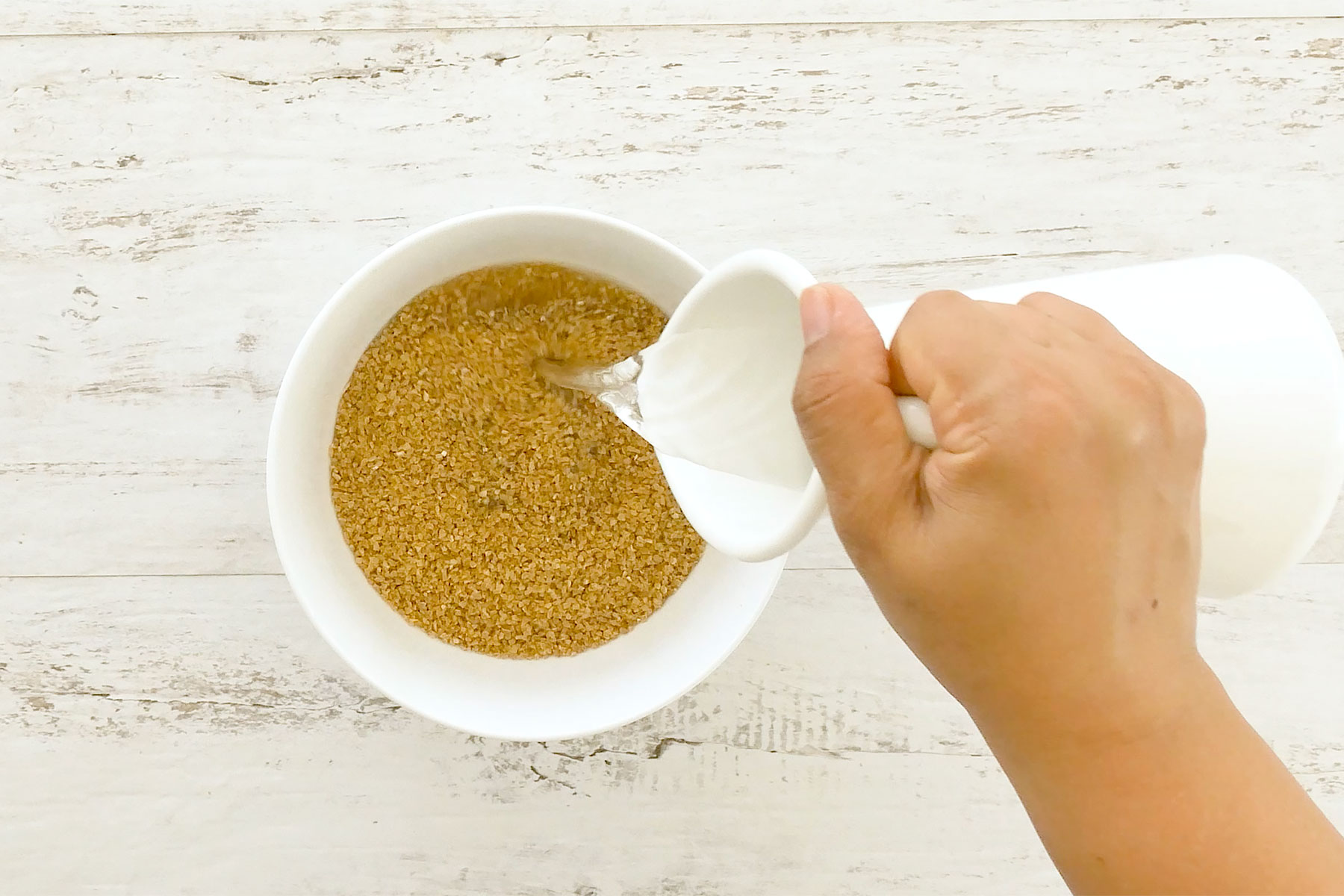 Soak bulgur: Pour the bulgur into a bowl and add enough water to cover, let it rest for an hour.
Soak bulgur: Pour the bulgur into a bowl and add enough water to cover, let it rest for an hour. Season the meat: In the meantime, mix the meat with onion, 1½ teaspoon of salt, and cayenne pepper. Mixed thoroughly using your hands.Divide the meat into halves, and set aside half of it.Add cumin seeds, cinnamon, and tomatoes to the half you will work with to make the filling.
Season the meat: In the meantime, mix the meat with onion, 1½ teaspoon of salt, and cayenne pepper. Mixed thoroughly using your hands.Divide the meat into halves, and set aside half of it.Add cumin seeds, cinnamon, and tomatoes to the half you will work with to make the filling.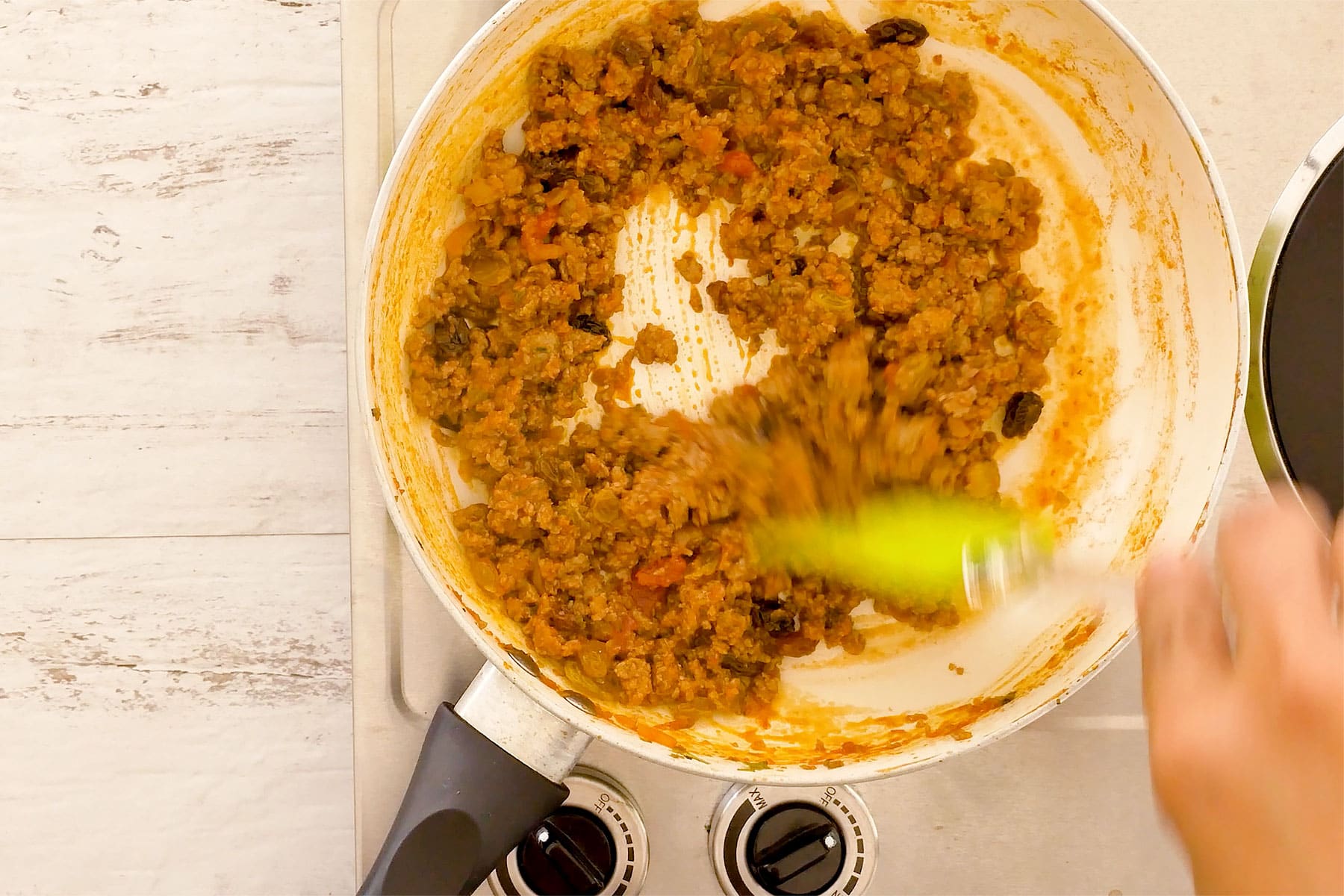 Cook the meat: Heat 2 tablespoons of oil in a large skillet over medium-low heat. Add the meat for the filling and quickly stir. Simmer, occasionally stirring, until the meat has cooked through and the liquids have evaporated. Taste and season with more salt if needed. Remove from the heat and mix in raisin, pine nuts and parsley. Cool to room temperature.
Cook the meat: Heat 2 tablespoons of oil in a large skillet over medium-low heat. Add the meat for the filling and quickly stir. Simmer, occasionally stirring, until the meat has cooked through and the liquids have evaporated. Taste and season with more salt if needed. Remove from the heat and mix in raisin, pine nuts and parsley. Cool to room temperature.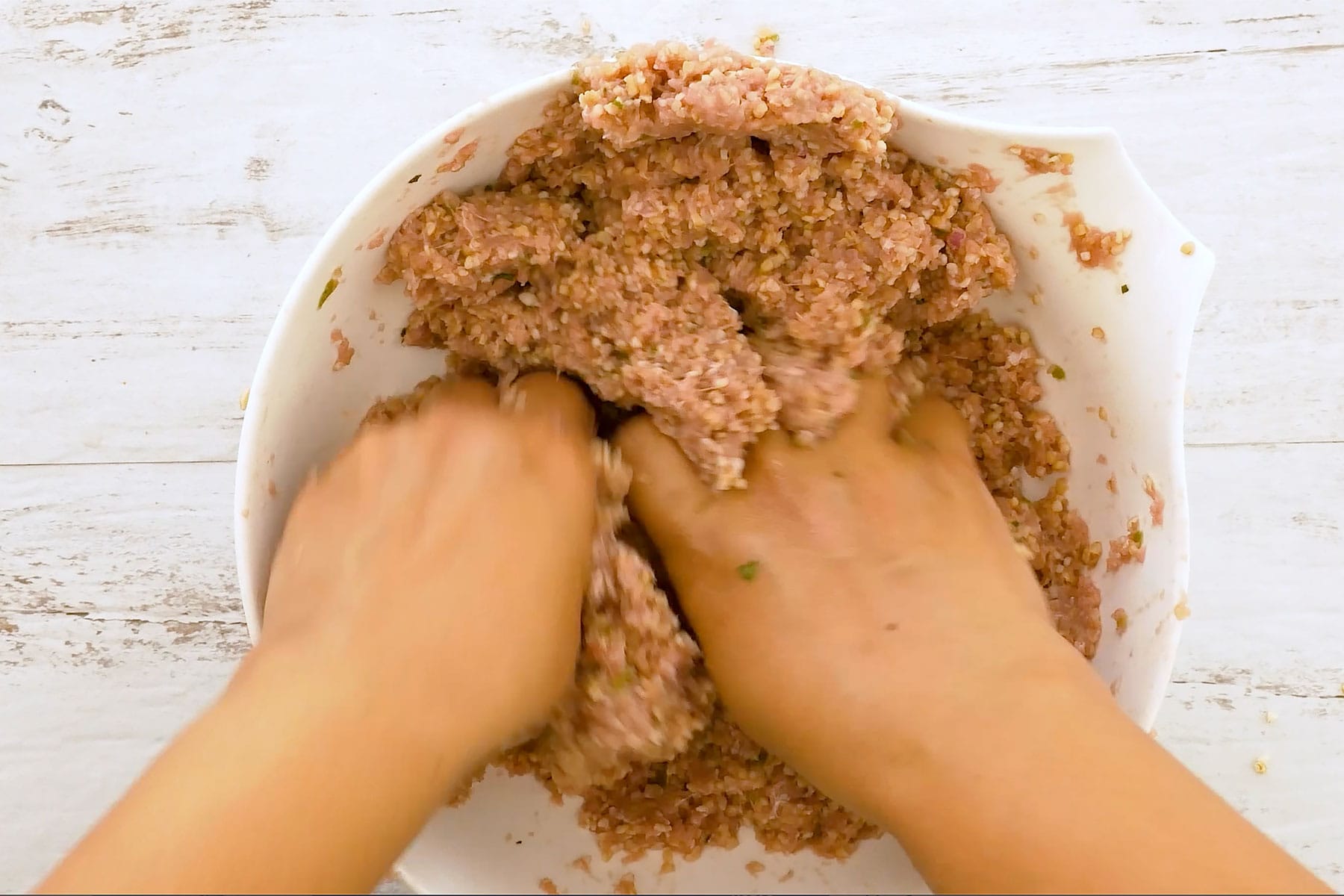 Make the crust: Once the hour has passed, use a sieve to drain any water that wasn't absorbed, pressing down to remove any excess water. Pour the bulgur into a large bowl.Mix the uncooked meat you had reserved with the bulgur, doing a kneading motion with your hands. It should be mixed well enough that it retains its shaped when you press on it.
Make the crust: Once the hour has passed, use a sieve to drain any water that wasn't absorbed, pressing down to remove any excess water. Pour the bulgur into a large bowl.Mix the uncooked meat you had reserved with the bulgur, doing a kneading motion with your hands. It should be mixed well enough that it retains its shaped when you press on it.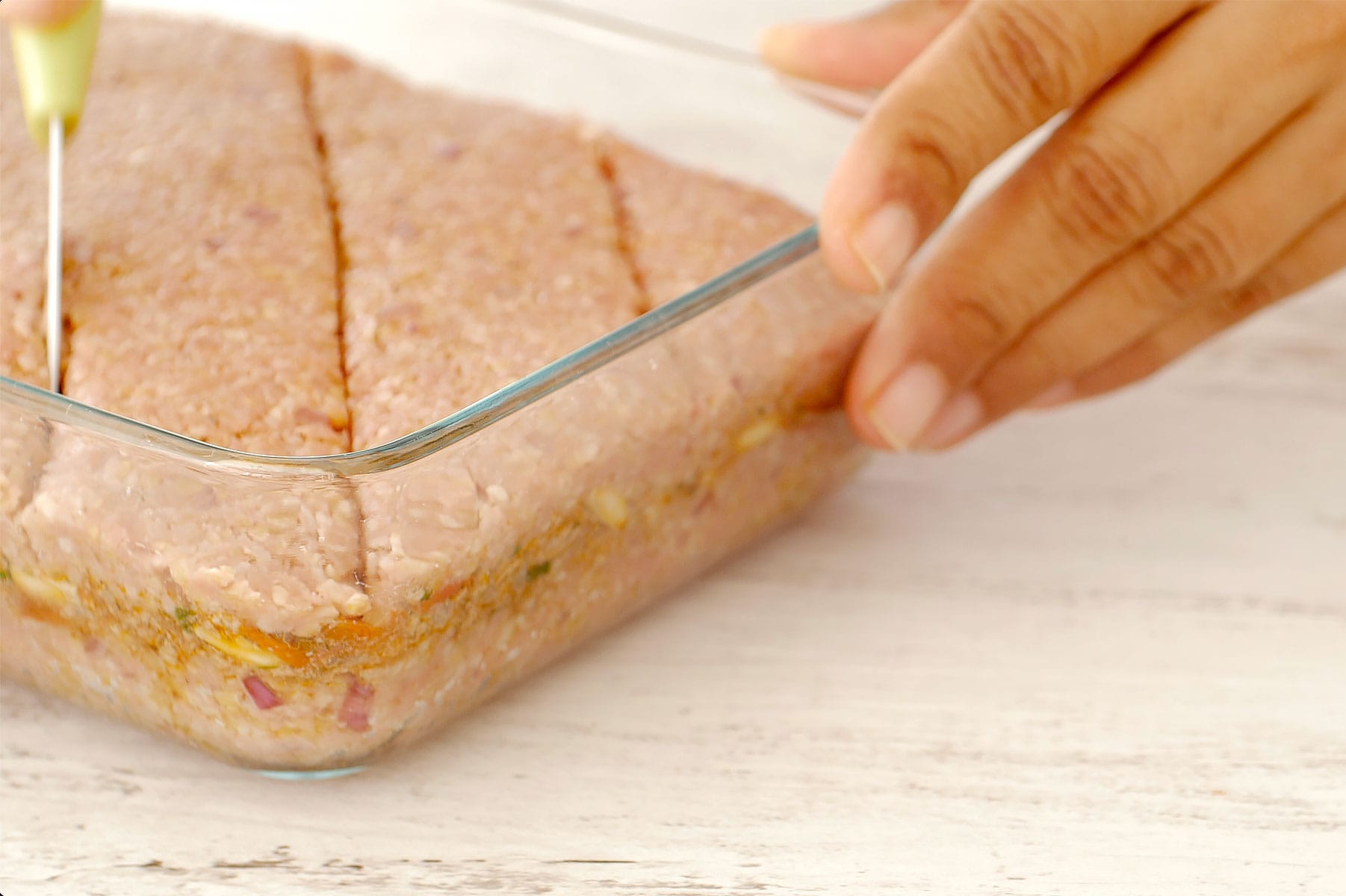 Assemble the casserole: Pour 2 tablespoons of oil on the bottom of a 7 x 10½ inches [18 x 27 cm] baking pan. Spoon in half the bulgur and meat mixture and press down with your hands to obtain an even, compact layer.Cover with the cooked filling, pressing down to make an even layer. Cover with the remaining bulgur mixture and press down to make a compact, even layer. Score deeply with a knife in a diamond pattern about 2½ x 2½ inches [7 x 7 cm]. Pour remaining oil on top.
Assemble the casserole: Pour 2 tablespoons of oil on the bottom of a 7 x 10½ inches [18 x 27 cm] baking pan. Spoon in half the bulgur and meat mixture and press down with your hands to obtain an even, compact layer.Cover with the cooked filling, pressing down to make an even layer. Cover with the remaining bulgur mixture and press down to make a compact, even layer. Score deeply with a knife in a diamond pattern about 2½ x 2½ inches [7 x 7 cm]. Pour remaining oil on top.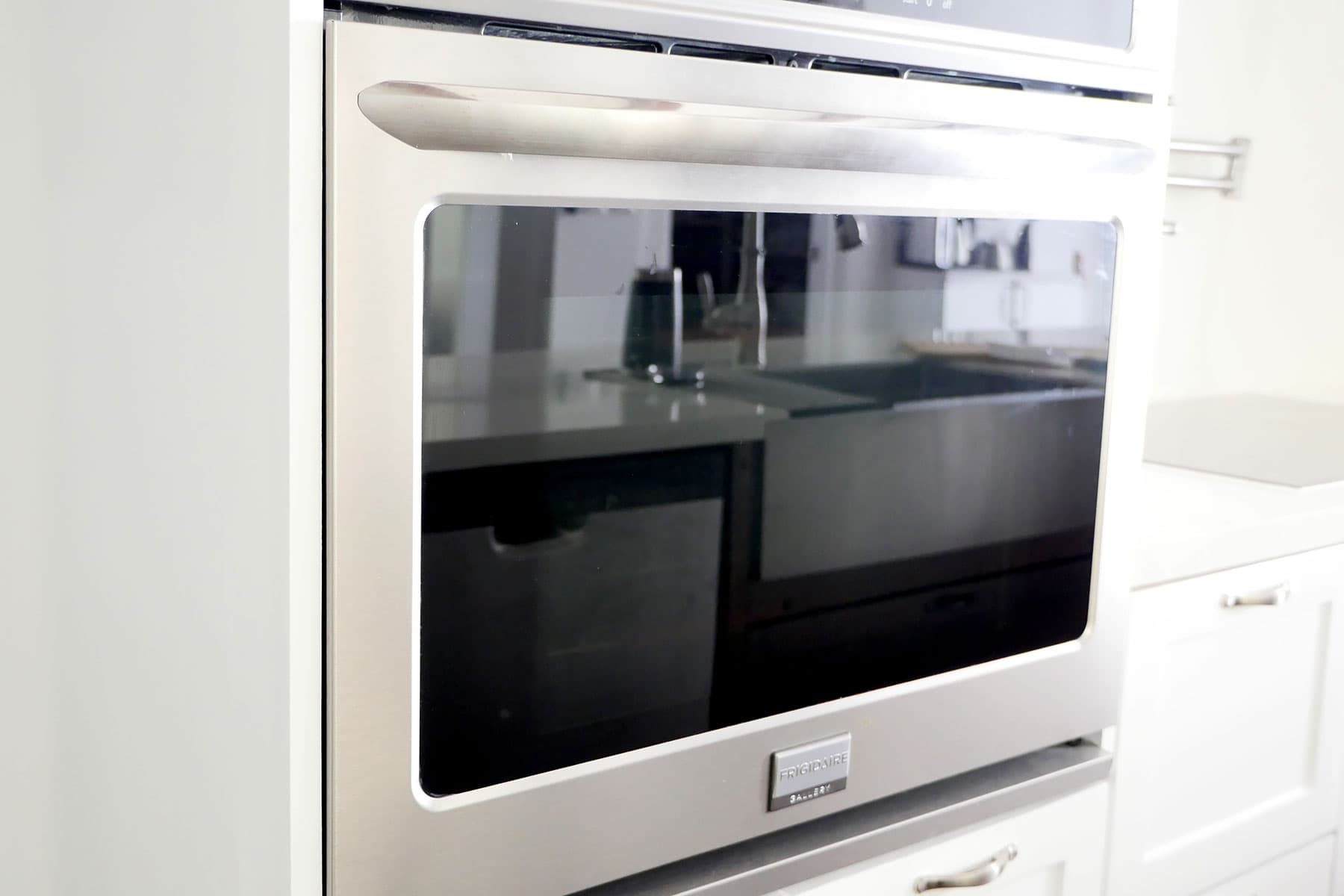 Cook the casserole: Bake in oven preheated to 400 ºF [200 ºC], for 40 minutes or until top is golden brown.
Cook the casserole: Bake in oven preheated to 400 ºF [200 ºC], for 40 minutes or until top is golden brown.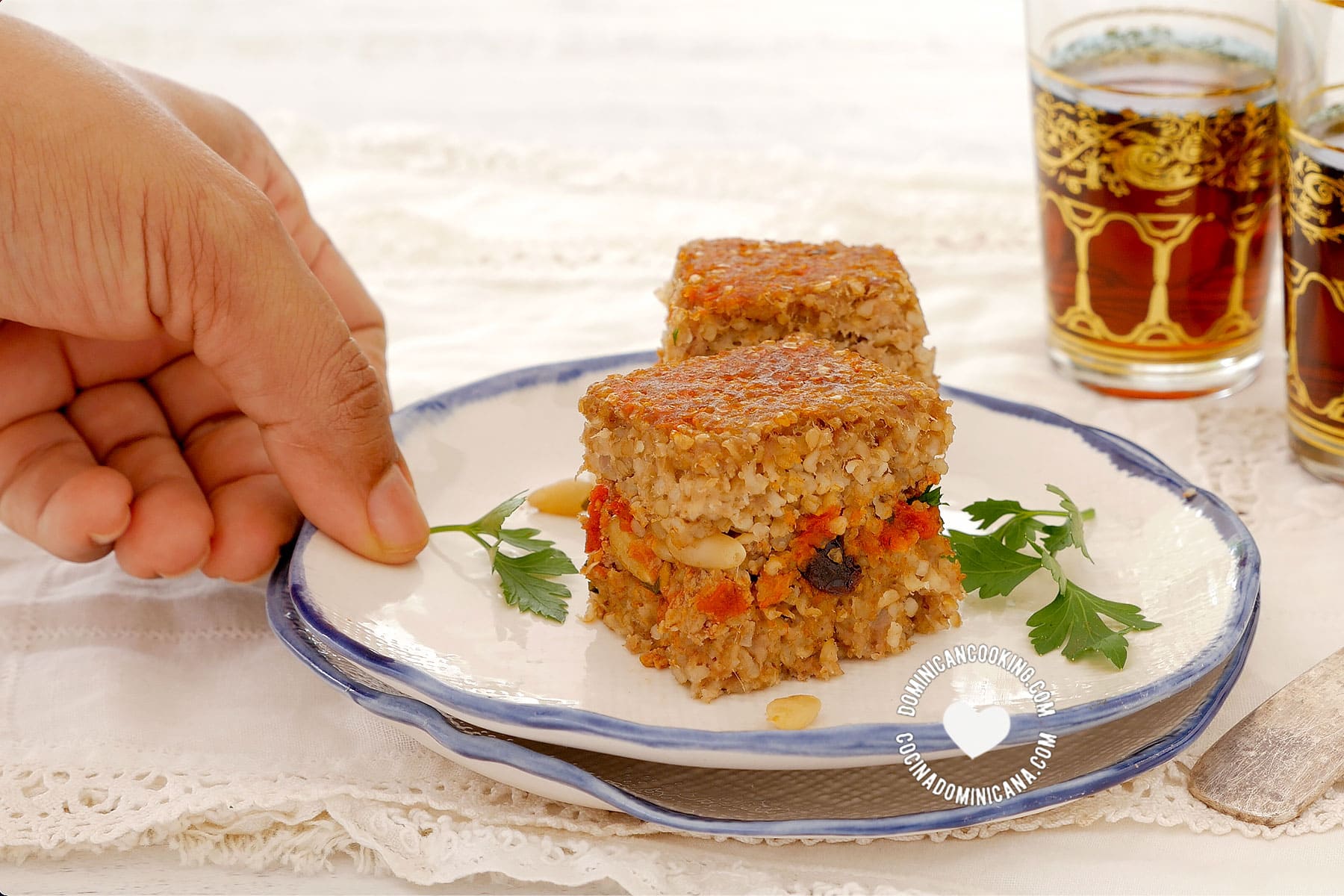 Serve: Remove from the oven and cool for a few minutes before serving.To go with it, I suggest a light salad of diced cucumber and onion, bathed in thick unflavored yogurt, and seasoned with salt and pepper to taste.
Serve: Remove from the oven and cool for a few minutes before serving.To go with it, I suggest a light salad of diced cucumber and onion, bathed in thick unflavored yogurt, and seasoned with salt and pepper to taste.
Video
Tips and Notes
Nutrition
Nutritional information is calculated automatically based on ingredients listed. Please consult your doctor if you need precise nutritional information.


